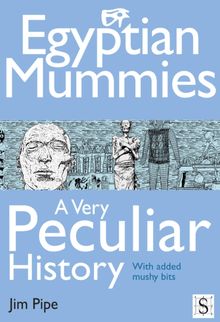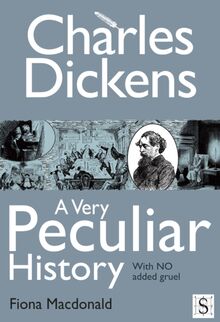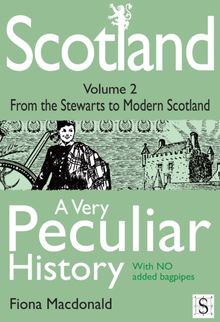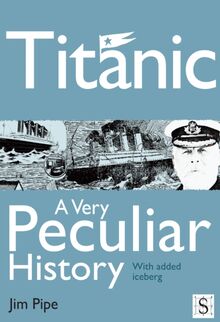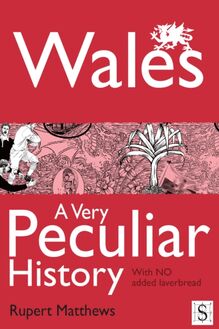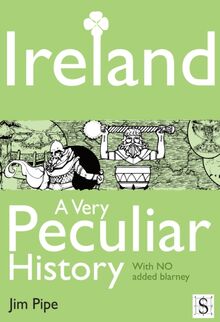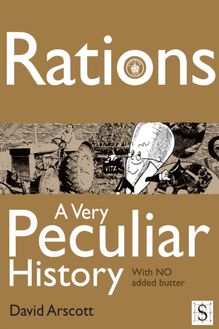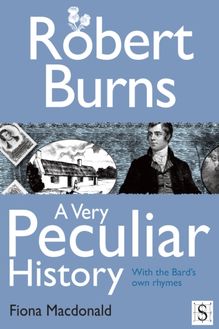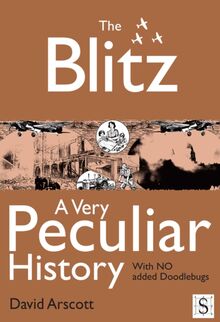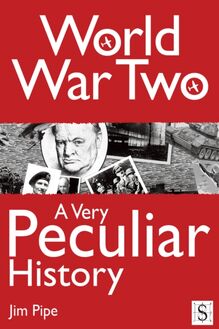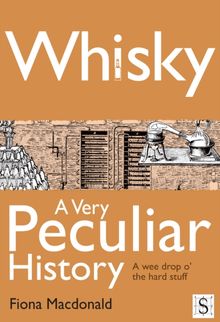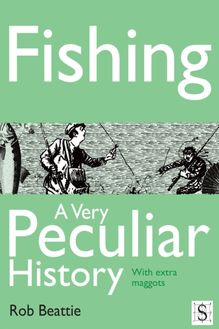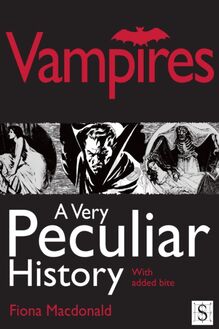-
 Univers
Univers
-
 Ebooks
Ebooks
-
 Livres audio
Livres audio
-
 Presse
Presse
-
 Podcasts
Podcasts
-
 BD
BD
-
 Documents
Documents
-
- Cours
- Révisions
- Ressources pédagogiques
- Sciences de l’éducation
- Manuels scolaires
- Langues
- Travaux de classe
- Annales de BEP
- Etudes supérieures
- Maternelle et primaire
- Fiches de lecture
- Orientation scolaire
- Méthodologie
- Corrigés de devoir
- Annales d’examens et concours
- Annales du bac
- Annales du brevet
- Rapports de stage
La lecture à portée de main
Vous pourrez modifier la taille du texte de cet ouvrage
Découvre YouScribe en t'inscrivant gratuitement
Je m'inscrisDécouvre YouScribe en t'inscrivant gratuitement
Je m'inscrisEn savoir plus
Vous pourrez modifier la taille du texte de cet ouvrage
En savoir plus

Description
Sujets
Informations
| Publié par | Andrews UK |
| Date de parution | 06 février 2012 |
| Nombre de lectures | 0 |
| EAN13 | 9781908759504 |
| Langue | English |
Informations légales : prix de location à la page 0,0300€. Cette information est donnée uniquement à titre indicatif conformément à la législation en vigueur.
Extrait
Title Page
YORKSHIRE, A VERY PECULIAR HISTORY
With added eee-by-gum
Written by
John Malam
Created and designed by David Salariya
Publisher Information
First published in Great Britain in MMXII by Book House, an imprint of
The Salariya Book Company Ltd
25 Marlborough Place, Brighton BN1 1UB
www.salariya.com
www.book-house.co.uk
Digital edition converted and distributed in 2012 by
Andrews UK Limited
www.andrewsuk.com
Editor: Jamie Pitman
Assistant editor: Jodie Leyman
© The Salariya Book Company Ltd MMXII
All rights reserved. No part of this publication may be reproduced, stored in or introduced into a retrieval system or transmitted in any form, or by any means (electronic, mechanical, photocopying, recording or otherwise) without the written permission of the publisher. Any person who does any unauthorised act in relation to this publication may be liable to criminal prosecution and civil claims for damages.
Every effort has been made to trace copyright holders. The Salariya Book Company apologises for any omissions and would be pleased, in such cases, to add an acknowledgement in future editions.
Visit our website at
www.book-house.co.uk
or go to
www.salariya.com
for free electronic versions of:
You Wouldn’t Want to be an Egyptian Mummy!
You Wouldn’t Want to be a Roman Gladiator!
You Wouldnt Want to Join Shackleton’s Polar Expedition!
You Wouldn’t Want to Sail on a 19th-Century Whaling Ship!
Dedication
To my Yorkshire-born niece, Madeline Shott.
JM
Quotes
“Everything they think soon gets to the tongue, and out it comes, heads and tails, as fast as they can pour it.”
William Cobbett, 1830, describing the outspoken nature of Yorkshire folk
“My living in Yorkshire was so far out of the way that it was actually twelve miles from a lemon.”
Sydney Smith, 1855, vicar at Foston-le-Clay, grumbling about having to travel to York, the nearest big town
“I’ve never found a Yorkshire accent a disadvantage. A Yorkshire accent is taken as a mark of having lived in the real world.”
Sir Bernard Ingham, 1999, Yorkshireman and civil servant
“Yorkshire born and Yorkshire bred, strong in the arm and weak in the head.”
Yorkshire proverb
Putting Yorkshire on the Map
A map of Yorkshire showing pre-1974 boundaries of the Ridings and significant towns and cities.
1.York
2.Doncaster
3.Scarborough
4.Bradford
5.Leeds
6.Huddersfield
7.Halifax
8.Barnsley
9.Wakefield
10.Knaresborough
11.Hull
12.Beverley
13.Rotherham
14.Sheffield
Introduction: Where The ‘eck Is Yorkshire?
Is it possible there are people in the world – or even in Britain – who do not know where Yorkshire is? Apparently there are, and if you happen to be one of them, you need to read the next few pages.
There was a time, not so very long ago, when British schools displayed huge roll-down maps of the British Isles on classroom walls, and school atlases had pages, usually at the front, devoted to British geography. This was how children learned about the nation’s rivers, mountains, towns, transport networks and counties. Show them a map with the outlines of the counties, and they’d be able to name a good number of them, especially those close to where they lived.
It’s different today, and children can sail through their school years without learning that the Severn is Britain’s longest river (354 km / 220 miles), that Ben Nevis is the highest mountain (1,344 m / 4,409 ft), or that there are 86 historic or traditional counties (39 in England, 34 in Scotland, 13 in Wales). Give today’s youngsters an outline map of British counties to name, and many would be left blank, or misplaced (counties, that is, not children).
Could you do any better? Could you pick out, say, Derbyshire from Nottinghamshire, Brecknockshire from Radnorshire, or Morayshire from Banffshire? Could you be certain of pointing to Yorkshire and – heaven forbid – not its arch-rival Lancashire?
So, for the benefit of the geographically-challenged, here are a few basic facts to help you locate the fine county of Yorkshire on your mental map of the British Isles.
Location, location, location
•Yorkshire is in the north of England. (There’s no firm line to divide England’s north from south. Some say the north begins at the Watford Gap – a break in the hills in the county of Northamptonshire. Others say it begins further up the country at Crewe, in Cheshire, a railway town hailed by travellers as the ‘gateway to the north’.)
•To put it another way, Yorkshire is half-way up the map of Britain, on the right-hand side.
•York, the county town, is closer to Edinburgh, capital of Scotland, than it is to London, capital of England. A straight line to Edinburgh is 259 km (161 miles), but the line to London is an extra 21 km (13 miles). It’s not much, but it’s more than enough to make the point that Yorkshirefolk are true northerners (and proud of it). The fact that London and the south are a long way from God’s Own County, as they call it, suits them just fine.
•Yorkshire almost splits Britain in two, reaching from the North Sea east coast to within touching distance of the Irish Sea west coast. The county’s most westerly place, Low Bentham, is a mere 24 km (15 miles) from the sea, and it’s only a lump of Lancashire that stops Yorkshire stretching from coast to coast.
Hopefully, this has fixed Yorkshire ‘up north’ in your mind, and you should have the idea that it’s big. In fact, it’s Britain’s biggest county. From north to south Yorkshire is about 152 km (95 miles), and west to east 183 km (114 miles).
Yorkshire is so big that when the Vikings arrived in the AD 800s, they carved it up into three pieces which eventually became known as the Ridings of Yorkshire. The North, West and East Ridings served the county well for more than one thousand years. Civil wars and world wars came and went, and the Yorkshire Ridings survived the lot until, on 1st April 1974, the government scrapped centuries of heritage across England and Wales.
It might have been April Fool’s Day, but no-one was laughing. When the Local Government Act of 1972 came into force in 1974, Yorkshirefolk woke up to a new-look county. Their ancient Ridings had gone, and were replaced by the new counties of North Yorkshire, West Yorkshire and South Yorkshire. But it was more than a change of a few old names. Civil servants had redrawn the county boundaries, and in a stroke of their pens did more to change the shape of Yorkshire than at any time since the Vikings.
What’s it like today? Well, for most Yorkshirefolk, Yorkshire means the historic county of Yorkshire – the county as it was before the government tinkered around with it in 1974. It’s that definition that this book will try and stick to, and as you turn the pages you’ll be given an insight into the long, and sometimes peculiar, history of Yorkshire.
Ridings of Yorkshire
Why Ridings? Because the Viking word for the three pieces was ‘thrithjungr’, which became the Old English word ‘thriding’. Try saying it – what does it sound like? Thriding became the modern English word ‘riding’. It simply means ‘thirds’.
CHAPTER ONE: Prehistoric Yorkshire
Yorkshire’s story begins a very long time ago. So long ago, you’ve got to go back to the end of the last Ice Age, which was about 10,000 years before the present day.
It’s hard to say where Yorkshire’s first people came from. There’s a good chance they came from far away, perhaps from the mainland of Europe. If they did, they wouldn’t have needed boats to make the long journey – they could have walked all the way. That was only possible because at the end of the last Ice Age the eastern side of Britain was joined to Europe by a land bridge – a big chunk of low-lying land that archaeologists call Doggerland. It spread out from present-day East Anglia all the way down to Kent, then pushed east to join up with Holland, Germany and Denmark.
Today, the North Sea divides Britain from Europe, but in the time we are talking about the sea level was lower. People and animals were able to wander across Doggerland, back and forth between Britain and Europe. It may have been herds of migrating red deer and elk that led hunter-gatherers to cross Doggerland, tracking their prey northwards and up into Yorkshire. We know they came here because in 1947 archaeologists found a place where these early people set up camp.
Living by a lake
The ancient camp was discovered close to the villages of Flixton and Staxton, about 8 km (5 miles) south of Scarborough. Archaeologists have given it the name Star Carr (‘carr’ is a Yorkshire dialect word meaning ‘marshy’), and their discoveries rewrote the history of early people not just in Yorkshire, but in Britain.
It was around 8,700 BC that a group of hunter-gatherers arrived. Archaeologists call this period the Mesolithic, which means Middle Stone Age. The group came to the northern shore of a shallow lake, which spread across what is today the Vale of Pickering. Although the lake dried up long ago, its extent can be traced in the landscape of Yorkshire. It has even been given a name – Lake Pickering.
The Star Carr camp was in use for about three hundred years. Throughout this time small bands of people came to the site, possibly each summer. They stayed a while, before moving to the next camp. From bones found at the site it’s clear they hunted red deer and other wild
-
 Univers
Univers
-
 Ebooks
Ebooks
-
 Livres audio
Livres audio
-
 Presse
Presse
-
 Podcasts
Podcasts
-
 BD
BD
-
 Documents
Documents
-
Jeunesse
-
Littérature
-
Ressources professionnelles
-
Santé et bien-être
-
Savoirs
-
Education
-
Loisirs et hobbies
-
Art, musique et cinéma
-
Actualité et débat de société
-
Jeunesse
-
Littérature
-
Ressources professionnelles
-
Santé et bien-être
-
Savoirs
-
Education
-
Loisirs et hobbies
-
Art, musique et cinéma
-
Actualité et débat de société
-
Actualités
-
Lifestyle
-
Presse jeunesse
-
Presse professionnelle
-
Pratique
-
Presse sportive
-
Presse internationale
-
Culture & Médias
-
Action et Aventures
-
Science-fiction et Fantasy
-
Société
-
Jeunesse
-
Littérature
-
Ressources professionnelles
-
Santé et bien-être
-
Savoirs
-
Education
-
Loisirs et hobbies
-
Art, musique et cinéma
-
Actualité et débat de société
- Cours
- Révisions
- Ressources pédagogiques
- Sciences de l’éducation
- Manuels scolaires
- Langues
- Travaux de classe
- Annales de BEP
- Etudes supérieures
- Maternelle et primaire
- Fiches de lecture
- Orientation scolaire
- Méthodologie
- Corrigés de devoir
- Annales d’examens et concours
- Annales du bac
- Annales du brevet
- Rapports de stage
